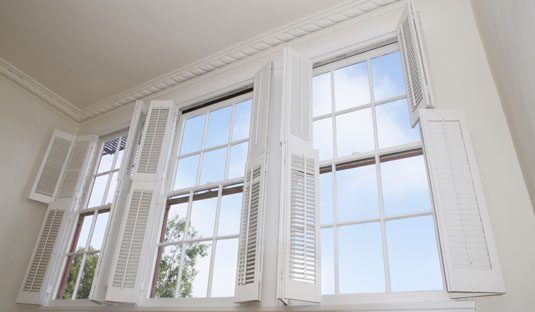In the home, condensation can accumulate on windows and other surfaces that are cool. This can both be bothersome and potentially harmful to the house. It is easy to mistake condensation, which appears most often on windows, for a window problem. In most cases, this is untrue. In any cold environment, excess humidity condenses on surfaces. If condensation forms on windows, you can be sure it forms on walls as well. Because of its ability to penetrate the walls, this is more dangerous.
Condensation is caused by too much moisture or water in the air. When this happens, the air cannot hold the excess humidity. As a result, it condenses on the most practical cool surface for getting rid of it.
Humidity: where does it come from?
- One-half pint of water is added to the air every hour by breathing and perspiring by a family of four.
- Each day, cooking can add up to four or five pints of water.
- Taking a shower can add another half-pint.
- Several pints of water can be added to the air by dishwashing machines, washing machines, and dryers.
- Excessive humidity from humidifiers.
- Humidity creeps into homes through poorly insulated crawl spaces.
- When a home is newly constructed, there will often be excess humidity since the building materials are gradually drying out. This is normal and usually settles down after a year or two.
Specifically, in order to reduce condensation, the humidity in the air should be determined and the source must be addressed.
What is the maximum humidity air can tolerate?
The warmer the air, the more moisture it holds. It is demonstrated when condensation forms on a cold glass on a humid, hot summer day. As a result, the air has reached its maximum amount of moisture and cannot hold anymore. Consequently, it condenses when it comes in contact with a cool or cold surface.
Condensation occurs more quickly as the air cools because it cannot hold as much moisture.
In other words, how much relative humidity is ideal? With 70o F as an indoor temperature, it will fluctuate with the outside temperature. However, you can use the following relationship as a guide.
| Outside Air Temp | Inside Relative Humidity |
| -20° F or cooler | 15% Max |
| -20° | 20% Max |
| -10° | 25% Max |
| 0° | 30% Max |
| 10° | 35% Max |
| 20° | 40% Max |
You will likely experience condensation on cool surfaces if your relative humidity is above these levels.
Is condensation more common today than it used to be?
This may be the case in some cases. Traditionally, the insulation and weather-stripping in older houses allowed the house to breathe and exchange drier air with humid air inside.
In addition, windows were not so airtight and allowed colder air to enter the house as well as making the window’s surface colder.
The houses and windows we use today are more energy-efficient due to the energy consciousness of everyone. As a result, we are more comfortable, but the house may remain humid.
So, what do you do now?
The obvious solution is to reduce the humidity and decrease the number of cool surfaces in your house.
First, find out how humid your home is. As the temperature outside varies, it will need to be monitored regularly. Hygrometers measure the amount of humidity in the air. These can be found at almost any reputable hardware store.
You can control humidity by doing the following:
- Ensure that your humidifier is functioning properly. Once the weather gets cold, turn it down.
- Make sure all vents and appliances are vented outside.
- Attic and crawl spaces must be ventilated.
- Ensure your crawl space is vapor-permeable by covering the earth.
- If you’re cooking or taking a bath, run an exhaust fan.
- Make sure you have a fresh intake for your forced-air furnace if you have one.
- Storing firewood inside is not a good idea.
- You may want to consider opening your windows a little bit each day to allow colder, drier air to exchange with warmer, more humid air. This should not have a significant impact on your energy bill.
- Replace your windows with energy-efficient ones.
What is an energy-efficient window and why will it help?
A major element of the energy-efficient plan is window, door, and skylight replacement. By restricting the amount of cold air that enters around a window, the surface is kept cooler. In double or triple-glazed windows, spacers between the glazing are more energy-efficient and prevent cold air from migrating through them to cool the glass.
The Low E coating (or low emissivity coating) is a special metallic coating designed to reflect and prevent radiant heat from passing through the glass. During cold weather, it keeps heat in. When it’s hot outside, it keeps the heat out.
By using energy-efficient windows, the interior glass surfaces will be kept warmer, reducing the number of cool surfaces on which moisture can condense.
Summary
As a means of reducing condensation:
- Reduce the moisture in the air as the outside temperature drops.
- Maintain a proper ventilation system in your home.
- Make use of exhaust fans.
- You should use vapor barriers in your crawl space.
- Measure and regulate your humidity level with a hygrometer.
- Install energy-efficient windows.
Although you may still have some temporary condensation when the weather is very cold, it is possible under unusual circumstances. However, if the home is properly vented and the humidity level is correct, this will be short-lived.




